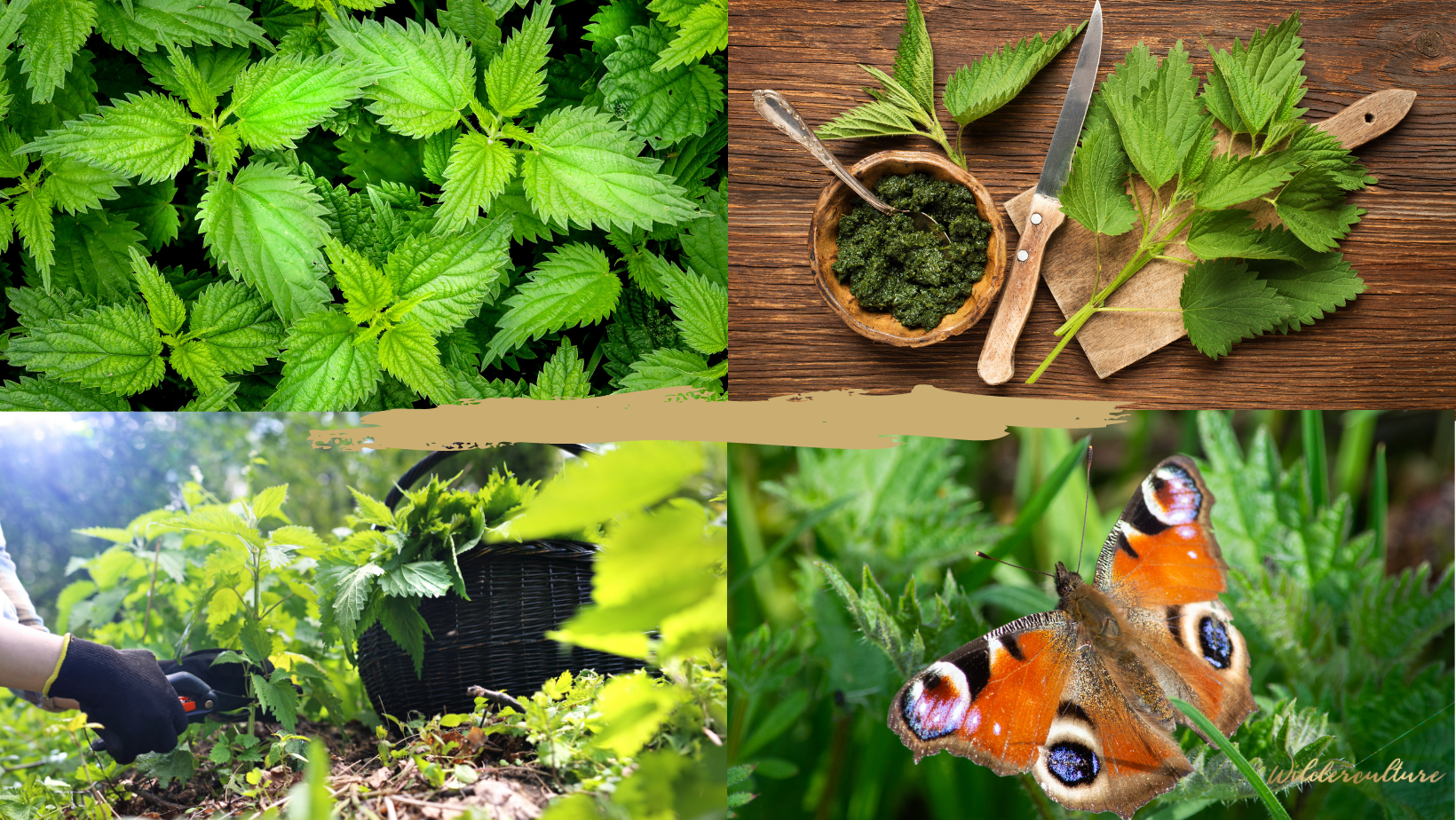
Red Flag Species – Part 1
Red Flag Species
Part 1: Plants
By Georgia Wingfield-Hayes
When you have been trained to think in a particular way all your life, it can be extremely difficult to change what has become second nature. However challenging ourselves in this way can be the most satisfying of ventures, as it opens up new possibilities in our understanding of life.
Over the following months I will be covering what we at Wilderculture call Red Flag Species.
Understanding Red Flag Species is fundamental to the shift in thinking required as we move from monocultural landscapes towards allowing soils to heal and biodiversity and productivity to return.
Over a series of three articles we will be looking at how land management practices might be preventing this reset; how certain species rather than being framed as problems can be reframed as indicators to underlying issues; and how by understanding these red flag indicators, we can act to support, rather than further hinder, nature’s dynamic processes.
Weeds and Problem Species
We all know there are certain species that we don’t want to see in our fields, especially where animals are grazing or hay is to be made. Ragwort, docks, nettles and thistles are probably top of the list. But what if we take a step back and ask what role these ‘problem species’ are playing in the environment and what they can tell us about what else is going on.
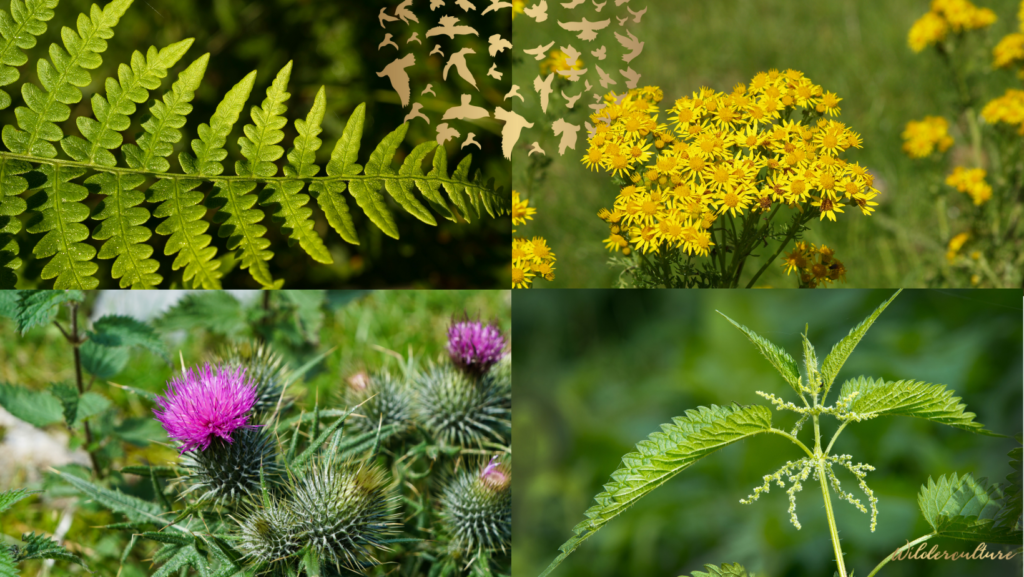
As with all things regenerative there is generally no simple single answer to such an inquiry, but rather multiple factors at play. So patience, with oneself as much as the problem, is always a good idea.
Let’s take a ‘for instance’. Let’s say there is one patch of a field that persistently grows docks and in some areas nettles too. You have been diligently cutting each year, perhaps spraying to try and prevent them reseeding and spreading but they just keep coming back. Perhaps what you haven’t noticed is that this problem in fact remains isolated to this one corner of the field and hasn’t spread, despite seed being available from other areas.
So before we go any further let’s take a closer look at docks and nettles, to see what we know about them.
Broad-leaved Dock: Rumex obtusifolius
Also known as bitter dock, this plant was designated an ‘injurious weed’ under the UK Weed Act in 1959. It is known to have aggressive roots and can tolerate extreme conditions of climate and soils.
Historically docks were used as a food for humans, cooked or raw, it is used in a similar way to spinach. It was also boiled up as pig fodder. Deer, goats and sheep are all very fond of eating fresh dock leaves. Cows like the young leaves but will probably go for other plants first. Horses generally will not eat docks.
Dock plants support many insects, butterflies and moths. For species like the knot-grass moth, Acronicta rumicis, the dock is its predominant larval food.
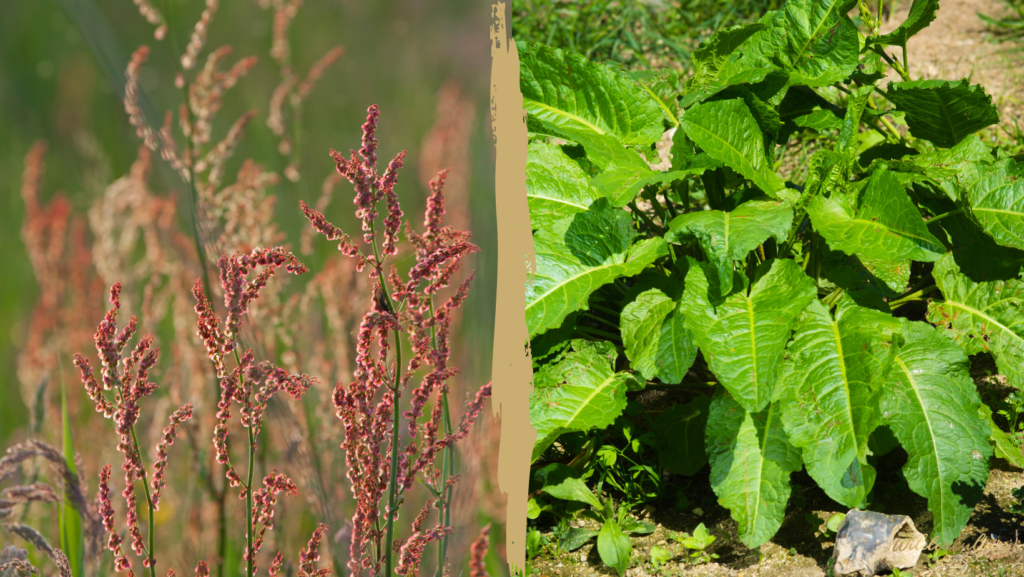
Broad-leaved dock will colonise disturbed ground but also and in particular compacted, overgrazed ground. Here, their strong tap root gives them a competitive advantage, but also helps break up compacted soils. Docks will also favour soil that is high in nitrogen.
Stinging Nettles: Urtica dioica
Known for their sharp sting caused by hypodermic hollow hairs that deliver a cocktail of chemicals into the skin. Nettles have long been used as a food, tea and medicine as they are a highly nutritious plant: High in Vitamin C and A and the mineral iron, calcium and magnesium. Nettles have also been used as a textile fibre going back to the bronze age.
Nettle has a root system which forms a wide spreading rhizome through the soil. It is often associated with human habitation, abandoned buildings and disturbed land. Elevated levels of phosphate and nitrogen in the soil create an ideal environment for nettles. For these reasons they will often be found around livestock feeding sites and areas around trees where animals rest and defecate a lot.
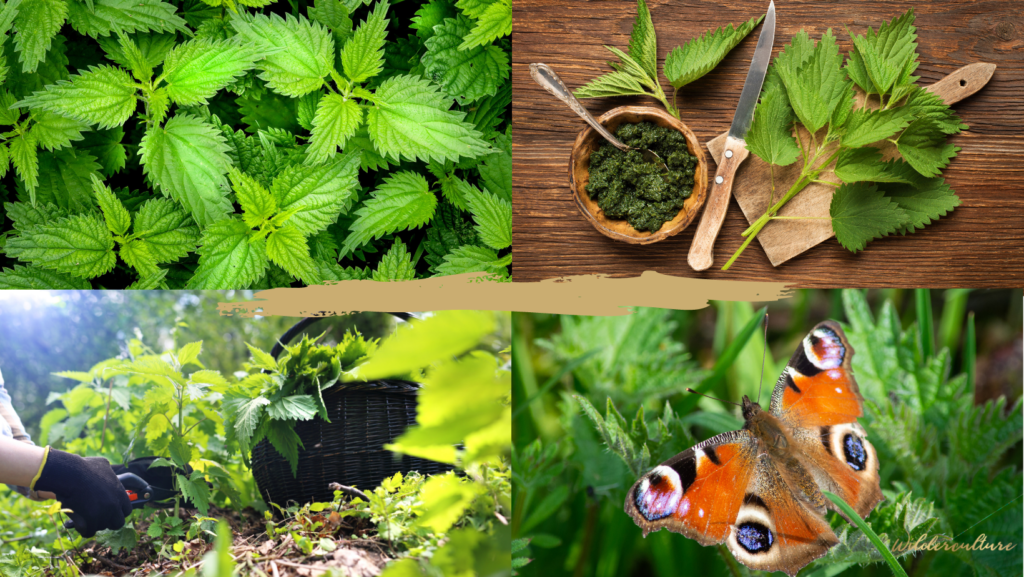
Nettles are the main larval food for peacock and small tortoiseshell butterflies as well as many moth species. Nettle ‘tea’ made by soaking nettles over time in water, is a potent liquid fertiliser for the garden.
Nettles are highly palatable to most grazing/browsing animals if cut and wilted, so that the sting no longer poses a problem. Standing nettles will be browsed by some animals at certain times of the year, sheep, goats and occasionally cows will eat them in the autumn. Most modern breeds however will never touch them.
A Broader Perspective
Coming back to our ‘for instance’ therefore, we might find that nettles and docks are indicating to us that that area of the field is subject to overgrazing, soil compaction and/or higher nutrient levels. This might be because animals spend more time in that area perhaps at rest or being fed supplementary feed.
These areas might be subject to very high nutrient overload from slurry applications, excess fertilisers or because manure has been stored on that land.
Therefore rather than seeing nettles and docks as species that we have to directly control, we can start looking at how to shift overall management so that species diversity can increase and conditions be made less favourable to nettles and docks.
This would probably include planning your grazing so that the field gets time to rest. This way the soil and plant ecosystem will regenerate. You might also diversify the species you have grazing, as different animals favour different plants.
If an area is suffering from extreme soil compaction, it might be that alongside planning your grazing, you choose to hold your breath and trust the natural process at work. Plants, especially thistles and docks have deep tap roots which are ultimately solving the underlying problem of soil compaction by breaking up the soil structure and allowing the passage of air and water.
The Story of Thistles at Knepp Castle
Knepp Castle wilding project, went through three years of an explosion of creeping thistles. Where previously they might have gone and topped the field, they had reached a point in their management of letting nature lead, standing back (if a little nervously) and watching.
They never could have predicted what followed. As each year the thistles got thicker, animals were less willing to graze and move through those areas, so there was less disturbance of the soil. Then in the third year a strangest magical thing occurred, when they woke one morning to clouds of painted-lady butterflies. This butterfly has one of the most extraordinary migratory cycles. Moving between Northern Europe and Africa over a cycle of 6 generations. So a bumper migration of painted-lady’s arrived in that third year, when the thistles were at their most widespread.
Now it just so happens that the painted-lady butterfly’s favourite plant upon which to lay their eggs and have their larva feed, is the thistle. So the team at Knepp watched as the thistles leaves were decimated by caterpillars, leaving the flower heads as easy pickings for the ponies.
That was the last year of the thistles plague at Knepp, the species has never recovered or returned in that way since. Whether this is because the butterflies weakened their resolve, or they had also simply done their job in healing the soil, it is hard to say. What was clear after those years however, was that the areas where the thistles had been thickest, are the areas that ant hills were able to establish and grow a protective layer of vegetation. Restoring another ancient feature of the landscape.
Regenerating Wonder
One thing that is clear when we start to sit on our hands and keenly observe nature rather than trying to control her, is that we enter the realm of the unexpected and unpredictable, often with joyous results.
With this approach we give ourselves the opportunity to think out of the box.
Instead of labelling a species ‘good’ or ‘bad’ we can ask ‘what have we done in our management to create the conditions and resources for this organism to thrive?’
We start to see plants such as bracken for example, in a different light. Bracken seems to plague our mountains and fells, but if we look carefully we realise that we have unwittingly created the perfect conditions for it to take over.
By allowing highly selective grazers like sheep access to freely graze and browse these upland areas, often without rest for hundreds of years, the plant communities present have become increasingly simplified. This has allowed the niches once occupied by a diverse mix of heathland and wood pasture species, to be taken over by a generalist species that livestock will not eat.
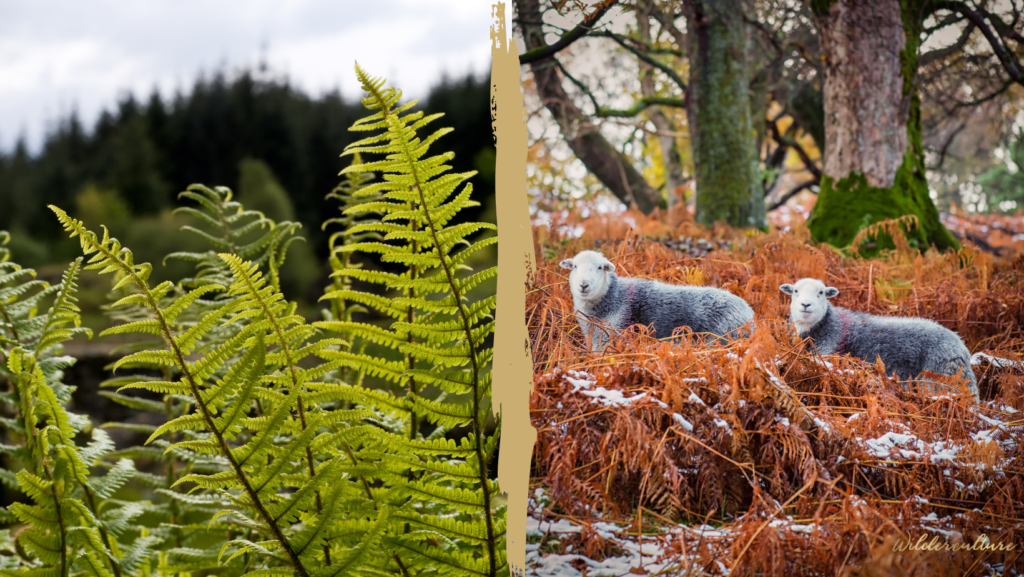
Nature is always trying to advance in succession and build soil. Bracken, if you will, is acting as a proxy woodland in these areas that were mostly likely once covered by wood pasture. Bracken has a vast photosynthetic capacity and as a consequence highly effective at building soil.
With a change in management these areas can be allowed to regenerate to wood pasture, in part, thanks to the soils bracken have built. In the shade of trees bracken will abate and a more complex under-storey will return. This creates a far greater diversity of forage for herbivores who can then act to maintain the dynamic nature of wood pasture as it ebbs and flows.
Red Flag Species as a subject therefore, is about much more than understanding ‘problem species’, it is a new way of looking at the natural world. One that helps us understand that nature’s dynamic processes and networks are far more complex and nuanced than we will probably ever understand.
———————
In the next article we will be looking at livestock and problems of parasites and disease they may experience.
2 Comments


Richard 2 years ago
The more I read the less I know. I will walk the uplands with a new eye.
Emma 2 years ago
Brilliantly written. Love the topic choice. Observing in minute scale what is happening on our land.
Would love to hear your thoughts on brambles.
Look forward to the next article.